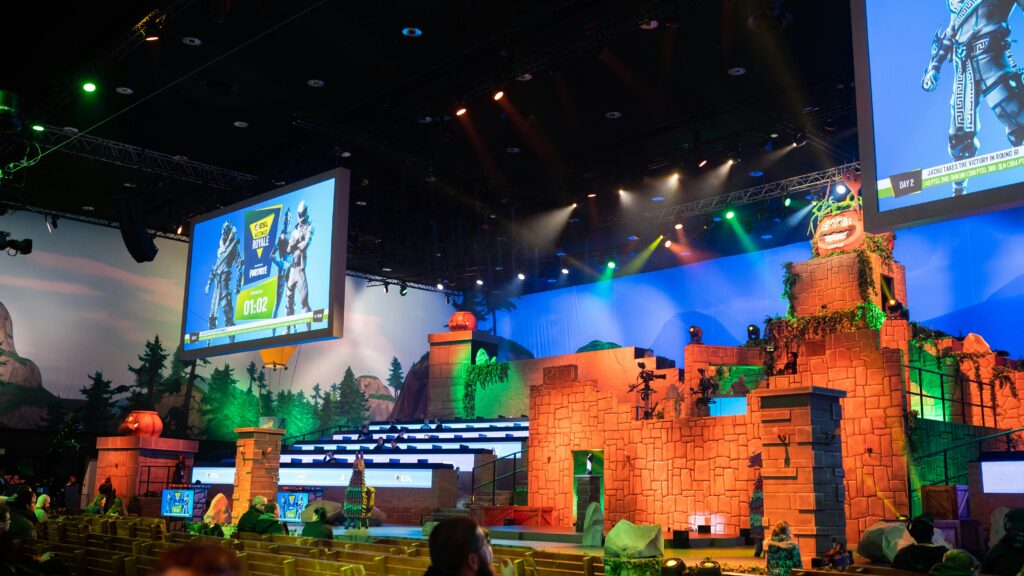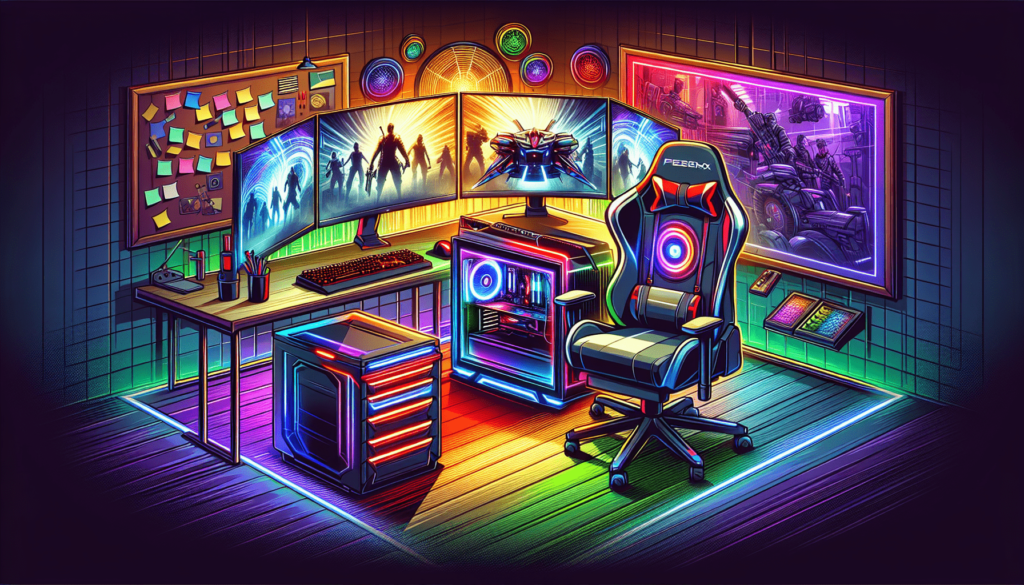The Impact of Esports on Game Development
The Impact of Esports on Game Development”
Esports has revolutionized the gaming industry, and we are witnessing a dynamic shift in how games are created and evolved. Our article delves into the profound influence that competitive gaming has had on game design, mechanics, and community engagement. From inspiring innovative features to driving technological advancements, we explore how the esports phenomenon has become a catalyst for change, shaping the very future of game development. Join us as we uncover the symbiotic relationship between esports and the games we love, celebrating the incredible journey of this ever-evolving digital landscape. Have you ever wondered what kind of an impact esports has on game development? As gaming enthusiasts, we often marvel at the advancements and changes in our favorite games, sometimes without realizing the intricate connection between competitive gaming and the design, features, and updates of these titles.

A Brief History of Esports
Esports, or electronic sports, have seen monumental growth over the past few decades. They have transitioned from a niche hobby to a multi-billion-dollar global industry. The origins can be traced back to the early arcade tournaments and local LAN parties, evolving to major events with high production values and millions of viewers.
Evolution of Competitive Gaming
Initially, the focus of competitive gaming rested on local arcades. Games like “Street Fighter” and “Pac-Man” set the arena for these early competitions. With the advent of more powerful PC and console systems, games like “Quake” and “Counter-Strike” began pushing the boundaries, leading to the creation of leagues and organized tournaments.
Our focus here is to identify how this transformation from casual local competitions to grand international events has influenced game development.
Influence on Game Mechanics
One of the most significant impacts of esports on game development is the emphasis on balance and fairness in game mechanics. Developers face constant pressure to ensure that their games are competitive and fair, which directly influences how games are designed and updated.
Balancing and Patching
In the competitive gaming world, balance is paramount. Constant updates, patches, and adjustments are made to ensure no single strategy or character becomes overwhelmingly powerful. This leads to a dynamic and evolving gameplay experience, which keeps the player base engaged.
| Aspect | Pre-Esports Era | Esports Era |
|---|---|---|
| Update Frequency | Infrequent | Regular patches/updates |
| Balance Focus | Casual play | Competitive fairness |
| Community Impact | Limited feedback | Active community input |
Regular patches and updates are now standard practices, allowing developers to fine-tune the games continuously. This iterative process, driven by professional feedback and meta-analysis from the competitive scene, ensures the game remains fresh and engaging.
Skill Ceiling and Depth
Games that become esports titles are known for their high skill ceilings and depth. This means that the mechanics must allow for continual learning and skill progression, which makes the games not only challenging but rewarding for players to master.
For example, “StarCraft II” is a game admired for its incredible depth and high skill ceiling. The intricate balance between unit production, resource management, and strategic planning ensures that only the most skilled players stand out.
Impact on Game Features and Modes
Esports influence game development not only through mechanics but also through the introduction of new features and modes designed to enhance the competitive experience.
Spectator Modes and Broadcasting
The importance of viewership in esports cannot be understated. As a result, developers have created intricate spectator modes and broadcasting tools to provide an immersive experience for viewers.
- Example: In “Dota 2,” the spectator mode offers multiple camera angles, instant replays, and player perspectives, making the viewing experience as engaging as playing the game.
These features not only cater to the players but also to the audience, arguably one of the most crucial aspects driving the game’s longevity and popularity.
Training Tools and Tutorials
To help players rise through the ranks, modern games often include comprehensive tutorials and training modes. These tools are designed to assist players in honing their skills by offering detailed guides, practice environments, and coaching systems.
- Example: “League of Legends” has a “Practice Tool” where players can rehearse various game scenarios, refine their mechanics, and test out new strategies without the pressure of a live match.
Training tools make the entry barrier lower for new players while providing veterans with opportunities to refine and enhance specific aspects of their play.
Economics of Esports: Funding and Development
The financial aspect of esports has dramatically influenced game development. Revenues from broadcasting rights, sponsorships, and tournaments have brought in significant funds that developers can reinvest into improving and expanding their titles.
In-Game Purchases and Microtransactions
Developers often leverage the popularity of esports to introduce in-game purchases and microtransactions. These not only generate revenue but also help fund prize pools and further development.
- Example: The “International” tournament for “Dota 2” is partly funded by the sales of in-game items and battle passes. Portions of these sales contribute to the prize pool, which has soared into tens of millions of dollars.
Sponsorship and Advertising
Sponsorship deals and advertising have become major revenue streams for both esports organizations and developers. These funds often translate directly into more resources for game development, including better servers, more frequent updates, and enhanced features.

Community and Developer Interaction
Esports has ushered in an era where the community’s voice holds significant weight in game development. Open channels of communication between developers and players ensure that feedback is not only heard but often acted upon.
Open Betas and Public Test Realms (PTR)
Before releasing significant updates or new content, many games now undergo public testing. Open betas and PTRs allow developers to gather real-world feedback, ensuring new features meet the community’s expectations.
- Example: “Overwatch” employs a PTR where players can test upcoming changes, providing invaluable feedback that developers use to tweak and refine the final update.
Direct Developer-Community Dialogues
Regular developer updates, AMA sessions, and community surveys have become commonplace. These dialogues help bridge the gap between our expectations as players and the goals of the developers.
- Example: “Rainbow Six Siege” holds regular “Community Developer” streams where developers discuss upcoming changes, address community concerns, and gather feedback.
Case Studies: Games Shaped by Esports
To illustrate the profound impact esports has on game development, let’s look at some popular titles that have been significantly shaped by their competitive scenes.
Counter-Strike: Global Offensive (CS:GO)
Evolution Through Esports
Since its release, “CS:GO” has been at the forefront of competitive gaming. The game has evolved significantly, driven by the need to maintain balance and fairness, ensuring it stays relevant in the competitive world.
- Updates: Over the years, “CS:GO” has received numerous updates aimed at improving balance, such as weapon changes, map tweaks, and anti-cheat measures.
- Features: The introduction of features like competitive matchmaking and Prime accounts has targeted issues of fairness and security.
These continuous improvements are heavily influenced by professional scene analysis and community feedback.
League of Legends
From Casual to Competitive
“League of Legends” (LoL) started as a casual MOBA but quickly shifted toward a competitive focus as its player base grew.
- Esports Influence: The structure of LoL is heavily influenced by its competitive scene, with seasonal changes and the introduction of new champions and items often driven by professional feedback.
- Community Engagement: The development team frequently engages with players through patches, blogs, and live streams, illustrating how community input is essential.
Esports events like the World Championship have elevated LoL’s status, fostering a continually growing and involved community.
Overwatch
Evolution of a Hero Shooter
“Overwatch” is another prime example, where the competitive scene has deeply impacted its development.
- Role Queue: A major update that introduced role queues aimed to reduce toxicity and improve game quality, heavily influenced by competitive demands.
- Balance Patches: Regular patches are implemented, frequently adjusting hero abilities to maintain balance and competitiveness.
Blizzard has consistently worked with the community, incorporating feedback to shape the future of Overwatch.

Future Trends in Esports and Game Development
Looking forward, the relationship between esports and game development is only expected to grow stronger. We can anticipate new trends that will shape the future of our favorite games.
Virtual Reality (VR) and Augmented Reality (AR) Esports
As technology advances, VR and AR are poised to bring a new dimension to esports, offering immersive experiences and innovative gameplay mechanics.
- Impact: VR and AR could lead to the development of entirely new genres of competitive games, with unique mechanics and interactions.
AI and Machine Learning
AI and machine learning can offer personalized coaching, smarter matchmaking, and more sophisticated anti-cheat systems, profoundly influencing competitive gaming.
- Example: AI-driven analytics can provide deeper insights into player behavior, skill gaps, and optimal strategies, enabling more tailored and effective game updates.
Cross-Platform Play
The push towards cross-platform play ensures a broader audience and more comprehensive competitive scenes, influencing how games are developed and updated.
- Impact: Developers will need to focus on ensuring consistent experiences across different platforms, optimizing performance, and maintaining balance.
Conclusion
The impact of esports on game development is profound and multifaceted. From shaping mechanics and features to driving new economic models and fostering community engagement, the relationship between competitive gaming and game development is a testament to how far the gaming industry has come. As this symbiotic relationship continues to evolve, we can look forward to even more innovative and engaging gaming experiences in the future. So, whether we’re casual players or aspiring pros, it’s clear that esports will continue to be a driving force in the games we love and play.




